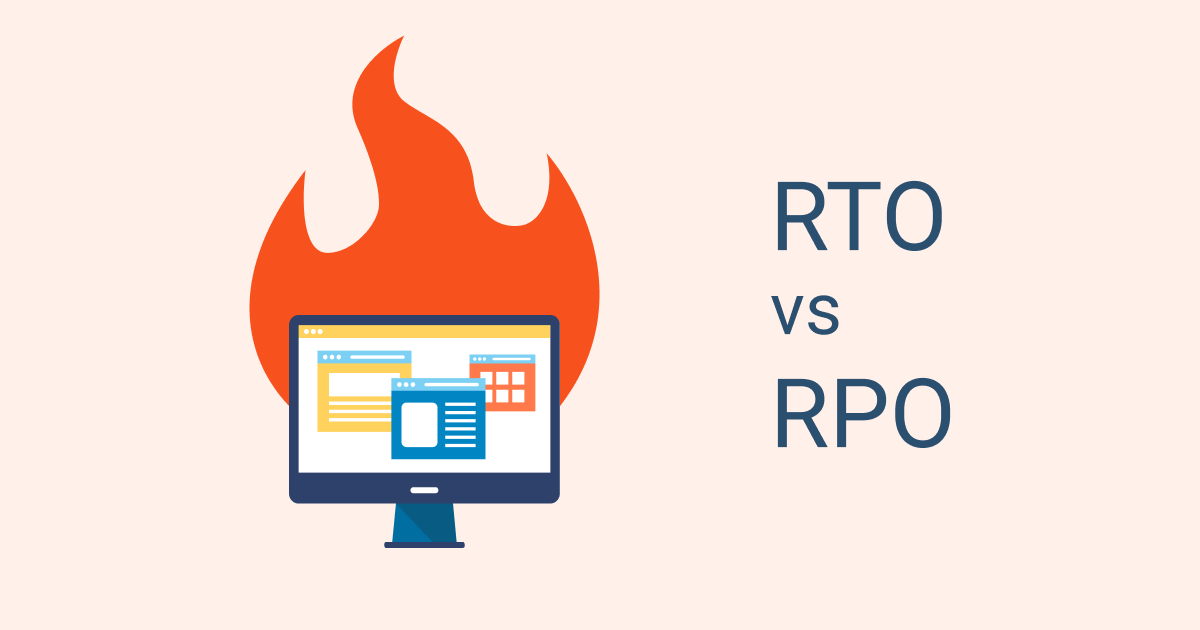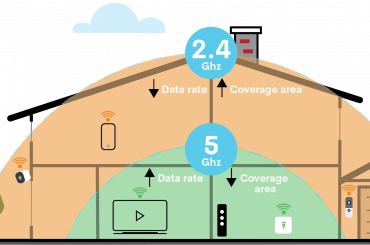There’s no way around disasters in business, including cyberthreats, data losses and downtime. You can either overcome these crises rapidly or you can be faced with unsatisfied clients, lost productivity, tarnished brand reputations, and legal and regulatory issues if you don’t.
You must have a comprehensive disaster recovery (DR) plan in place that aligns with business objectives so that your organization can mitigate the negative impacts of a disaster on critical business functions. In addition to providing a clear outline of backups and recoveries for any impacted systems, it also outlines the recovery point objectives (RPOs) and recovery time objectives (RTOs) associated with those systems. In order to determine viable approaches to include into a disaster recovery and business continuity plan, RPOs and RTOs are critical parameters to analyze. Learn what RTOs and RPOs are, how they differ, and what role they play in disaster recovery and business continuity.
RTO vs. RPO
It is important to distinguish RTO and RPO from one another since they define an organization’s tolerance for downtime and data loss. Getting to know each of these terms and what they mean will allow us to better understand these objectives and their differences.
What is RTO (recovery time objective)?
In order to avoid severe business damage after a disaster, the recovery time objective must be met within a certain period of time. In terms of RTO, it refers to the maximum time that your business will be unable to function without disrupting normal business operations. A business can suffer intolerable loss and downtime once that threshold is crossed. In the aftermath of an outage, RTO can help to determine the maximum amount of time it will take for business operations and IT infrastructure to be restored. Understanding downtime tolerance levels of your systems and applications is essential to setting appropriate RTO goals. There is a wide range of RTOs for systems and applications within an organization, ranging from minutes to hours to even days – depending on the criticality of the system or application.
What is RPO (recovery point objective)?
Data loss tolerance is the recovery point objective of your company. Business operations can continue without being impacted by lost data if a reasonable recovery point objective is met. RPO is a time-based measurement, estimating when the event of data loss occurred and the last valid backup that could be taken. You must separate your data based on its criticality in order to set the right RPO for your organization. For data considered existentially important or optimal for performance, RPO should be lower than for data considered mission-critical. Backup and recovery of data are key components of an organization’s disaster recovery plan. To ensure that your business doesn’t come to a grinding halt in the event of a disaster, RPO helps you determine how frequently you should back up your systems and data.
Why is it important for businesses to know both RTO and RPO?
You cannot have a BCDR plan without RTOs and RPOs because they are crucial for assessing your company’s limitations, implementing appropriate technology and resources, and having a planning strategy in place for a disruption. Whenever your business is affected by an outage or a security incident, you can quickly recover operation with minimal or no downtime. DR planning is made easier with RTOs and RPOs, as they help you to restore data, applications, and systems quickly in the event of a disaster.
Business leaders want near-zero RTOs and RPOs so they can have “zero data loss and zero downtime.” Achieving this goal requires determining the best balance between these objectives. In addition to this, however, there are several other factors to consider, as described below.
MTD (maximum tolerable downtime)
An organization may endure up to this amount of downtime without suffering severe business losses. Your company can suffer revenue loss or reputational damage if downtime exceeds the maximum tolerable or allowable downtime.
SLA (Service Level Agreement)
According to TechTarget, service level agreements are contracts between service providers and their customers that outline what services the providers will provide and specify the service standards the providers must meet. Customer expectations regarding service quality and type are managed by SLAs. In addition, they define service commitments and the conditions under which service providers and customers will work together.
BIA (Business Impact Analysis)
An impact analysis of a disruptive incident is designed to identify and quantify its potential impact on the operations, systems, and information of the company. A business intelligence analysis assists in determining the criticality of business functions, allocating necessary resources, and implementing strategies to minimize risks and ensure business continuity.
BCP (Business Continuity Plan)
Business continuity plans outline how organizations can cope with disruptions and remain operational in the event of a disaster. As a result of disaster strikes, a business continuity plan must consider every employee and asset at risk. An unplanned crisis can disrupt critical business processes if specific actions are not taken and predetermined responsibilities are not assigned.
DR (Disaster Recovery)
Data, applications and systems are restored after a disaster through disaster recovery. Organizations should have a disaster recovery plan that outlines how to respond in the case of an unplanned outage or crisis. Data loss and downtime can be minimized by implementing strategies that help restore vital support systems quickly.
Restoring and backing up data
For protection against loss or corruption, data backup and recovery involves making a copy (or copies) and storing them in a separate, secure place. Usually, it involves restoring data to a different site or returning it to the original site. It is possible to quickly recover from a disaster by restoring earlier backed-up copies of data, enabling quick business functions to continue uninterrupted.
Calculating RTO and RPO
Based on a company’s business, the type of data it holds, the assets it uses, and other factors, its RTO and RPO values can be relatively aggressive or moderate. In terms of calculating RPO and RTO, there is no one-size-fits-all solution. RTOs and RPOs can, however, be assigned relevant values using a common methodology.
To determine what business processes, systems, applications, personnel and end users will be affected by the disruption, you must first conduct a business impact analysis. The following chart illustrates how to classify assets based on their criticality once you’ve developed an inventory.
Existentially critical: In the event these assets were unavailable or compromised, your business would likely come to a halt.
Mission-critical: Although these assets may not pose a threat to the company’s existence, their unavailability may harm critical functions, employee productivity, and reputation, as well as result in revenue loss.
Less-than-critical: These third-party systems and data cannot be accessed, making your organization inefficient. However, they won’t hinder your organization’s mission or affect your organization long-term.
In order to avoid downtime in the future, it is important to identify the cost that downtime involves. This includes lost sales, productivity, remediation, restoration, and support, as well as reputational costs.
Once your team has classified assets and thoroughly understood the risks and costs of downtime, you can assign realistic RTO values. To confirm the suitability of the suggested RTO values within the company’s budget, consult with senior management. Low RTOs and RPOs will result in higher costs to achieve the target objectives, since lower RTOs and RPOs mean lower ROIs.
When calculating RTO, consider the following factors:
-
Losses in revenue
-
Applications and systems that are critical
-
Service Level Agreements
-
Recovery strategies have varying levels of complexity
-
Meeting desired goals at a reasonable cost
Recovery time or RTO is concerned with recovery time, while data recovery is concerned with recovery time. When calculating RPO, consider the following factors:
-
Loss of data is possible
-
Your business’s maximum tolerance for data loss
-
Data loss costs
-
Mitigation costs
-
Meeting desired goals at a reasonable cost



